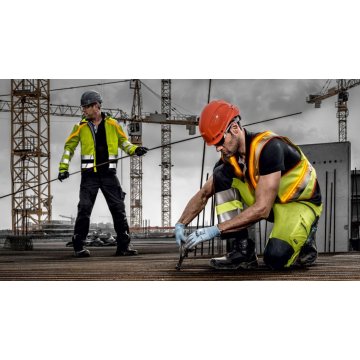RISK ASSESSMENT IN FIVE STEPS
Evaluation of risks in the workplace has become increasingly important in Europe since 2008 and an encouraging and informative process has begun for organizations to work on this issue.It is pointed out that risk assessment is the first step in occupational health and safety management, it should be made more understandable, institutions should be taught how to apply it, and it is a legal obligation to carry out this study.It is obvious that there is a low level of risk perception and awareness in our country, studies on this subject are either not carried out at all or are insufficient, so measures cannot be taken against risks, and this is especially true for SMEs.
In terms of introduction and guidance, this article will deal with risk assessment in practically five steps.Risk assessment, which constitutes the most important pillar of risk management applied in the field of occupational health and safety, which has become one of the most important factors of the understanding of quality today,Similar to the ISO 9000 quality management system, it takes place in a general framework in terms of identifying hazards and risks, taking precautions and evaluating the work done.
Studies on this subject benefit from the terminology of this system within the framework of the OHSAS 18001 quality management system.In its simplest form, it takes place within the PDCTP (Plan-Do-Check-Take Precautions) cycle.The hierarchical order of the measures to be taken is also clearly stated in our legislation (Occupational Health and Safety Regulation? Article 6). According to this;
1) Prevention of risks,
2) Evaluation of risks that cannot be avoided,
3) To fight risks at their source,
4) To make the work suitable for the people, especially in the design of the workplaces, to take care in the selection of work equipment, working style and production methods, especially to alleviate the monotonous work and predetermined production tempo, and to minimize their negative effects on health
5) Adapting to technical developments,
6) Replacing dangerous ones with non-hazardous or less dangerous ones,
7) Developing an overall prevention policy that covers the effects of technology, work organisation, working conditions, social relations and work environment factors,
8) Giving priority to collective protection measures over personal protection measures,
9) Workers need to be given appropriate instructions.
If we consider the steps to be applied in risk assessment in order;
Step 1; Identifying Hazards
In this step, it is determined what can harm employees, products and work equipment in the workplace.
Step 2; Evaluation of Hazards
In the first step, it is determined who and how will be affected by the identified hazards, what kind of precautions will be taken for which of the hazards in the list and which ones will be risk rated.
Step 3; Rating of Risks and Deciding on the Measures to be Taken
In the second step, risk weight ratios are calculated separately for each of the hazards that are decided to be rated and the risks are prioritized.
Step 4; Recording Findings and Implementation of Control Measures
For the dangers that can be eliminated immediately, the measures decided to be taken in the second and third steps are immediately implemented and an appropriate control period is determined so that the danger does not reappear. For measures that require a certain cost and time, implementation plans are made and the implementation process is started.
Step 5; Audit, Monitoring, Review and Improvement as Necessary
All stages and practices of risk management carried out in the workplace are audited and monitored within the scope of continuous improvement, and faulty areas are reviewed and updated when necessary.
In most small and medium-sized businesses, the hazards are often large enough to be easily eliminated. For this reason, it is easy to move businesses to higher levels in terms of occupational health and safety with little effort and expense.







